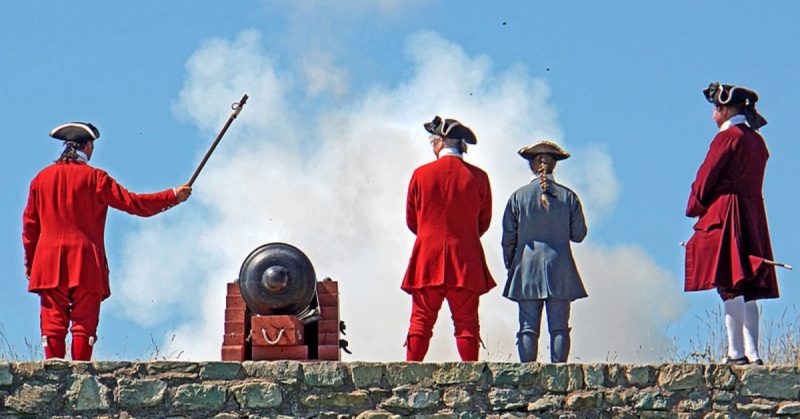That same day, the supporting Royal Navy ships utterly destroyed an attempted relief convoy of French and native forces.
When the American Colonies declared independence in 1776, tensions had been building with the British for a long time. Taxation without representation, the “Intolerable Acts,” and events like the Boston Massacre all played a role.
One might think that a long history of military cooperation between the regular British military and Colonial militias would have helped bring both groups together, but in reality, it often had the opposite effect.
Although many people know that the aftermath of the French and Indian War created a rift between the American colonies and the Crown, fewer people know that this mistrust began over a decade earlier, during King George’s War.
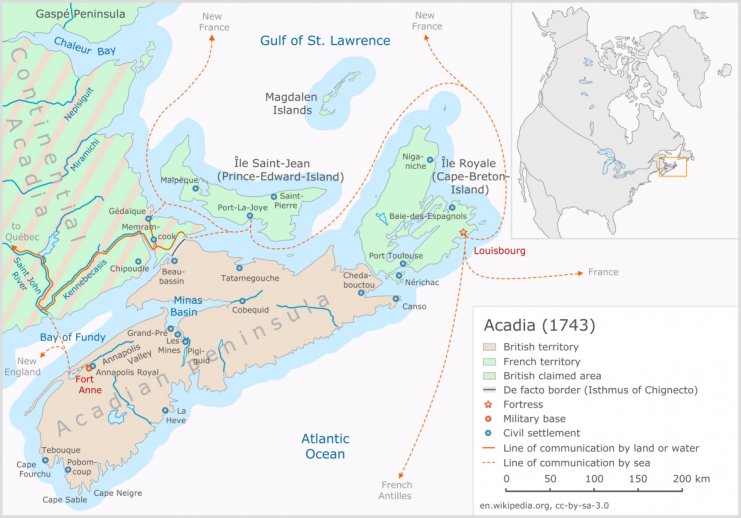
King George’s War
King George’s War was the North American front of the War of Austrian Succession. The War in Europe began over the question of whether Maria Theresa of the Hapsburg Dynasty could legally succeed her father Charles VI.
Old Salic succession laws were infamously sexist and dictated that a woman could not legally inherit a royal title. In contrast, many monarchies in Europe had been held by women at this point.
England and France, traditional enemies that they were, naturally found themselves on opposite sides in this conflict. England supported Maria Theresa, while France opposed her.

In North America, both the British and French allied with several Native American tribes. The colonists were used to fighting with and against various Native American tribes from time to time, and North America had played a minor role in conflicts between the British and French several times before.
However, King George’s War would take on a much larger scale than any of the previous wars.
Obviously, the average American colonist felt little reason to care about who took the throne of a country in Central Europe. Nonetheless, the colonies were expected to contribute to the war effort, which lasted from around 1744 to 1748 in North America.
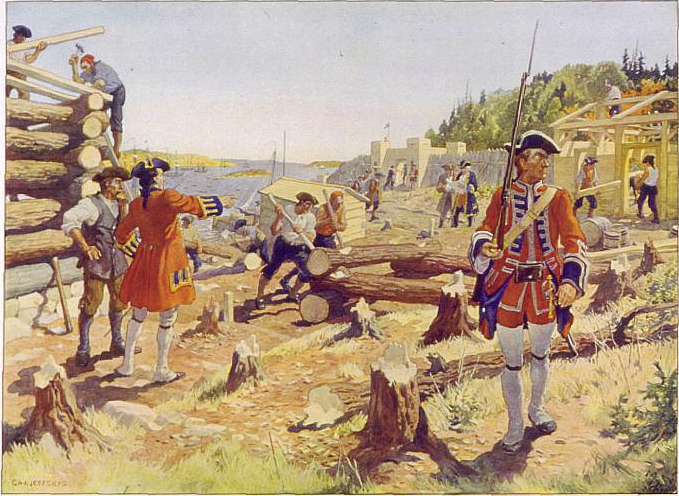
The Problem of Louisbourg
The French Fortress of Louisbourg became a significant concern for colonists in New England. Louisbourg was strategically positioned on the southern coast of Nova Scotia, allowing the fortress to dominate the Saint Lawrence Estuary and North Atlantic sea lanes.
https://youtu.be/mYpNz7bvB1g
In 1744, 36 ships were captured by French forces, often privateers, from Louisbourg. With trade and fishing income in the region crippled, many New Englanders started advocating for an attack on the fort.
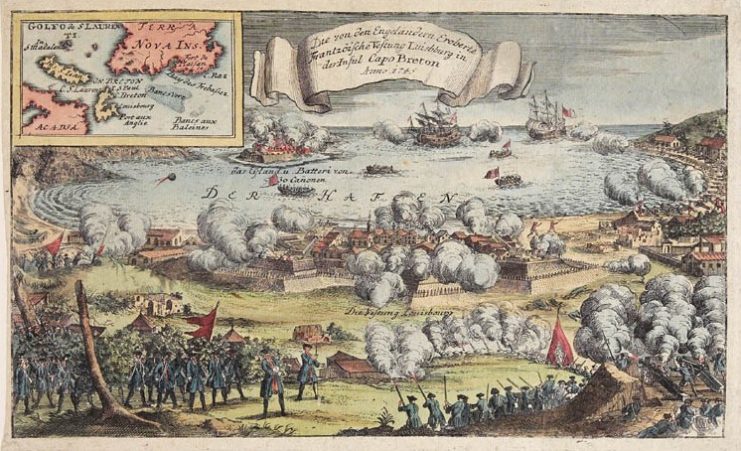
Massachusetts Governor William Shirley was in favor of the plan, but accomplishing this task would be no easy feat. Louisbourg was among the strongest fortifications in the Americas.
The fortifications in total encompassed nearly 100 acres of land and had around 200 cannons atop walls that were up to 30 feet high. The situation looked even worse for the colonists when the British government rebuffed Governor Shirley’s request for support in this attack.
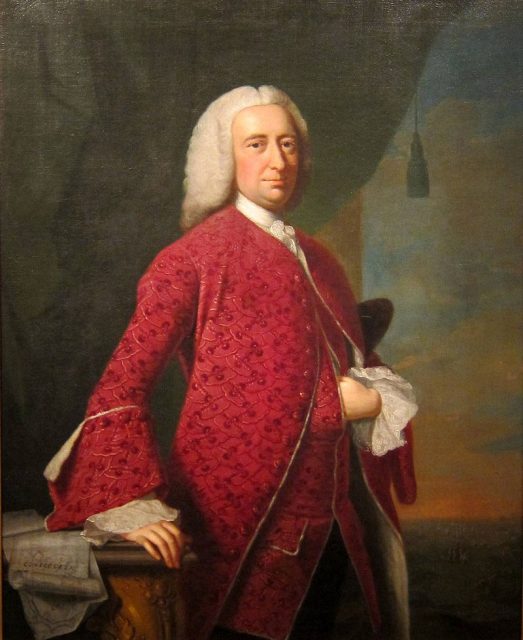
It seemed that the colonists would have to wait out the constant harassment of their shipping lanes until the war in Europe came to an end. However, their fortunes changed when a man named John Bradstreet, who had been a prisoner of war on the island, returned to Boston after being released.
He shared some of his observations about the fortress with William Vaughn, a wealthy businessman, who in turn brought this information to the attention of Governor Shirley.
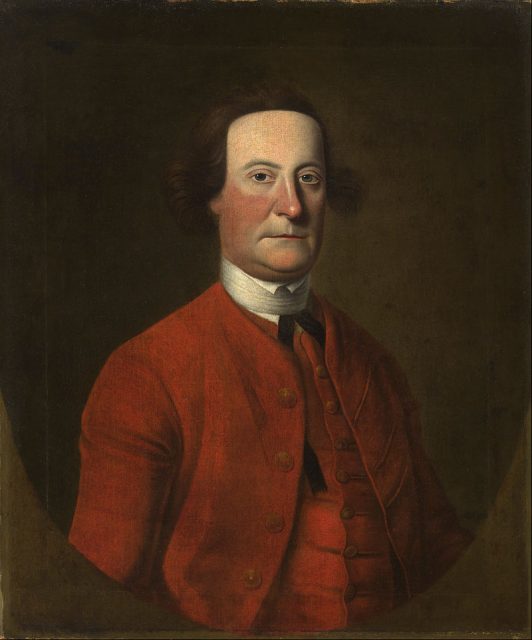
According to Bradstreet, Louisbourg was surprisingly vulnerable in early 1745. The French did not anticipate any assault on the island, so the bastion was poorly maintained. In addition, Bradstreet reported that the garrison’s morale was low (in fact, the garrison’s morale became so bad after Bradstreet was released that there was a six-month-long mutiny).
Finally, he noted that although the fortifications were strongly protected from naval assaults, they were much weaker against attacks from land.
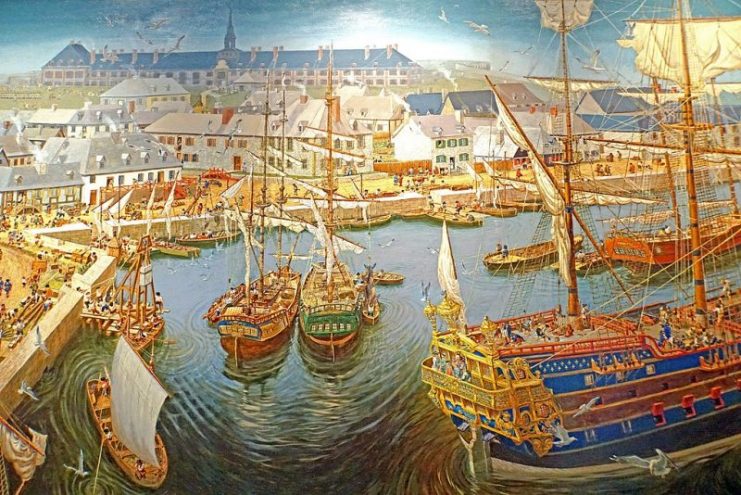
Preparing the Attack
Governor Shirley asked the Massachusetts Legislature to raise a force to attack Louisbourg without British government support. The legislature declined at first, saying “the British Government [is] solely responsible for organizing and financing any assault on Louisbourg.”
However, Vaughn launched what was essentially a massive lobbying campaign among all of the richest men in New England (who stood to lose the most due to shipping disruptions). This added pressure caused the legislature to change their minds, and the request was approved by a one-vote margin.
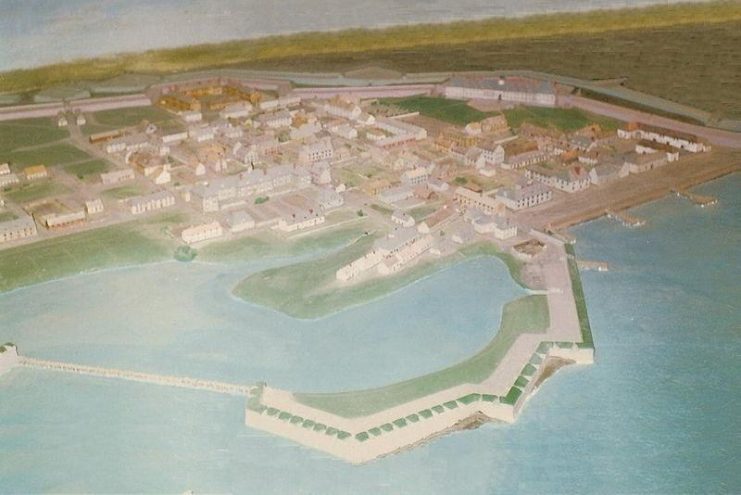
The Bourgeois influence over Shirley’s plans continued as he selected William Pepperrell, a man with no military experience, to lead the expedition. Pepperrell was a successful trader and well-liked by the business community.
However, Shirley generally did a good job supporting the invasion. Four thousand men were recruited in Massachusetts, and around 1,300 more were sent from nearby colonies after Shirley requested aid.
Finally, the governor reached out to several British naval commands in the Caribbean to ask for support. Commodore Warren of the Leeward Islands Squadron believed that Louisbourg was a valuable target and sent four warships to assist the invasion.
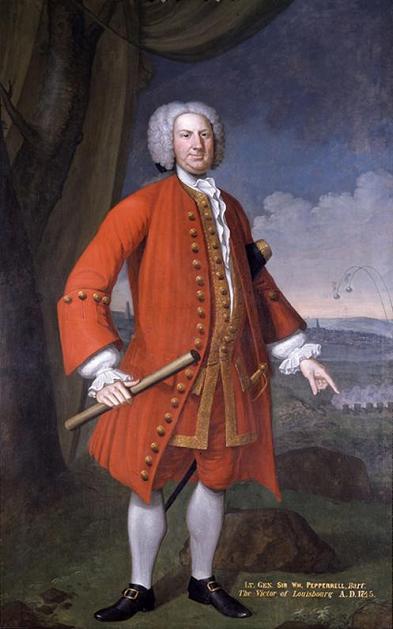
Siege of Louisbourg
The Siege of Louisbourg began on May 11, 1745, as English colonial forces landed on the beaches to begin their assault. They were met by a small French force that they easily repelled, and around 2,000 men landed on the shore that night. The rest of the force landed throughout the day on the 12th.
They faced three separate fortifications: the Grand Battery, the Island Battery, and the Citadel.
Vaughn, who was made a colonel for the expedition, led a group of around 400 men on a reconnaissance mission of the Grand Battery late on the 12th. Unfortunately, many of his men were more interested in plunder and adventure than military strategy and began to pillage the town. Vaughn was left with only around a dozen men to observe the fortifications.
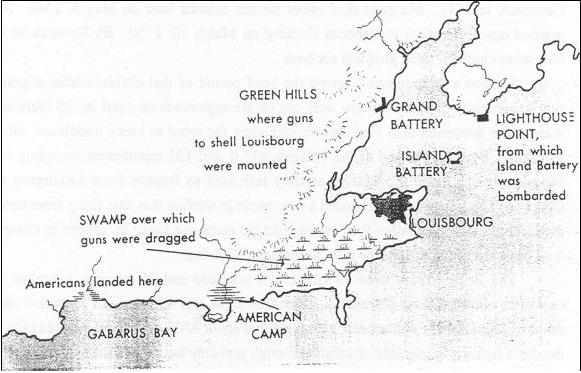
However, the observation was not difficult as they found themselves facing off against nobody. The French had abandoned the Battery, along with their cannons, presumably because they felt it could not be defended from land.
The colonial troops would make good use of those cannons in bombarding the Island Battery for the following six weeks.
While the Island Battery was besieged, some of the colonial forces were sent to attack settlements on other parts of the island. These included French fishing villages, as well of those of their native Mi’kmaq allies. There was occasional fighting throughout the campaign between the colonists and the Mi’kmaq, with light casualties on both sides.
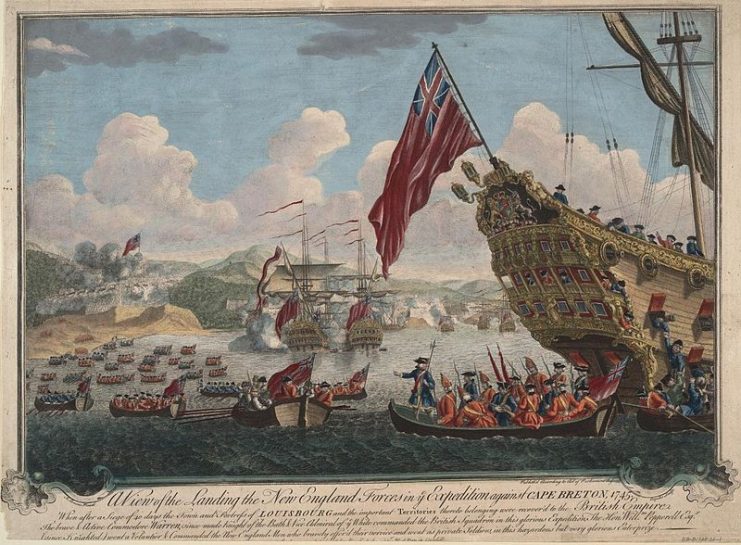
The English colonists suffered several failures while trying to take the Island Battery.
On June 6, an attack with over 400 men was thrown back with over 60 British soldiers killed or wounded and 116 taken prisoner. The next day, the New Englanders attacked with 650 men but were again forced back, suffering 189 casualties.
However, the tide of the battle turned decisively in the New Englanders’ favor when they managed to set up a new cannon battery on higher ground.
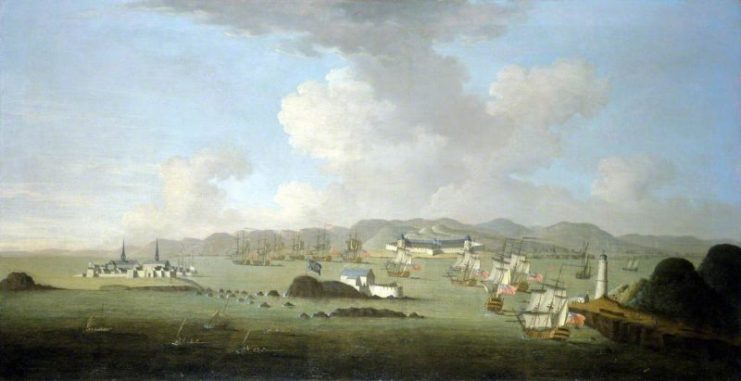
Pepperrell ordered hundreds of his men to drag some of their cannons to Lighthouse Point, where they were able to rain down fire on the Island Battery starting on June 21st. The Island Battery was silenced by the 27th, leaving only the main citadel of the Louisbourg fortifications.
That same day, the supporting Royal Navy ships utterly destroyed an attempted relief convoy of French and native forces.
On June 28, Colonel Pepperrell prepared his forces for a massive assault on the fort. However, French Governor Louis Duchambon saw that his relief had been destroyed, his men were weary, and his other fortifications were lost. Duchambon surrendered Louisbourg before the assault could begin.
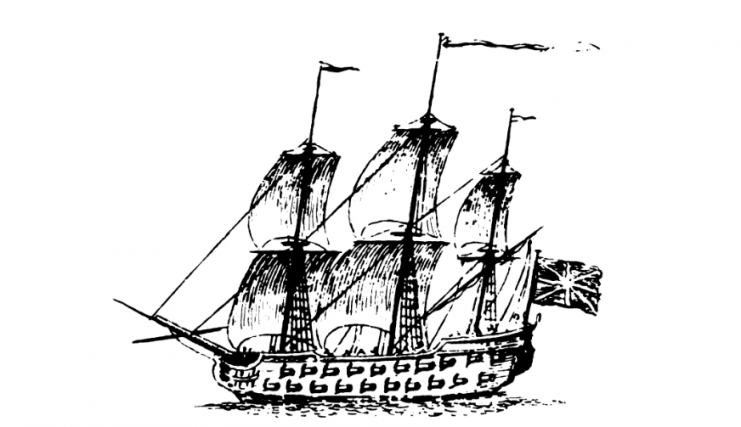
Unsatisfying Victory
Although the (perhaps surprising) success of the Siege of Louisbourg was widely celebrated in the American colonies, the mood soon turned sour. Around 100 New Englanders had been killed in the combat, and another 900 died of disease.
The average colonist wanted to see some benefit from these sacrifices. However, the British crown saw Louisbourg as a new bargaining chip for an upcoming peace deal.
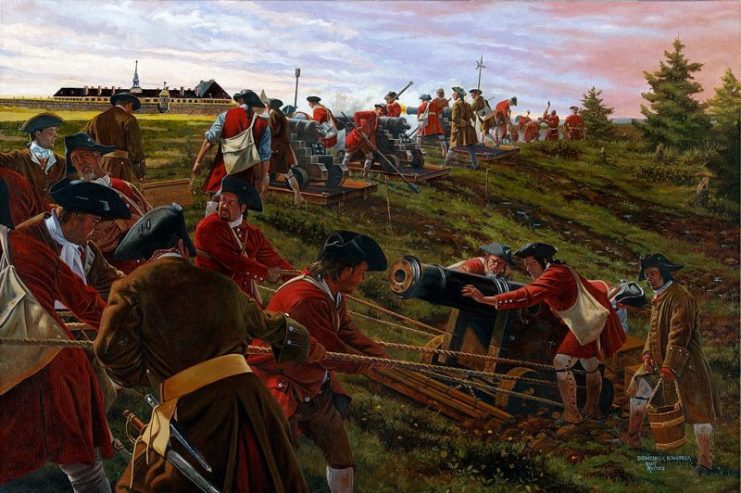
Ultimately, Louisbourg was given back to the French in exchange for returning Madras in India to Great Britain and withdrawing from the Belgian barrier towns. This decision left a bad taste in the mouths of many colonists.
Read another story from us: Adopting New Tactics – The Battle of Carillon
Although the Massachusetts colony was reimbursed for all expenses in 1749, that did little to help the average soldier who took part in the campaign.
Colonists were especially unhappy with the French presence at Louisbourg as it left them at risk if another war broke out. Indeed, the fortress had to be taken again in 1758, during the French and Indian War.
